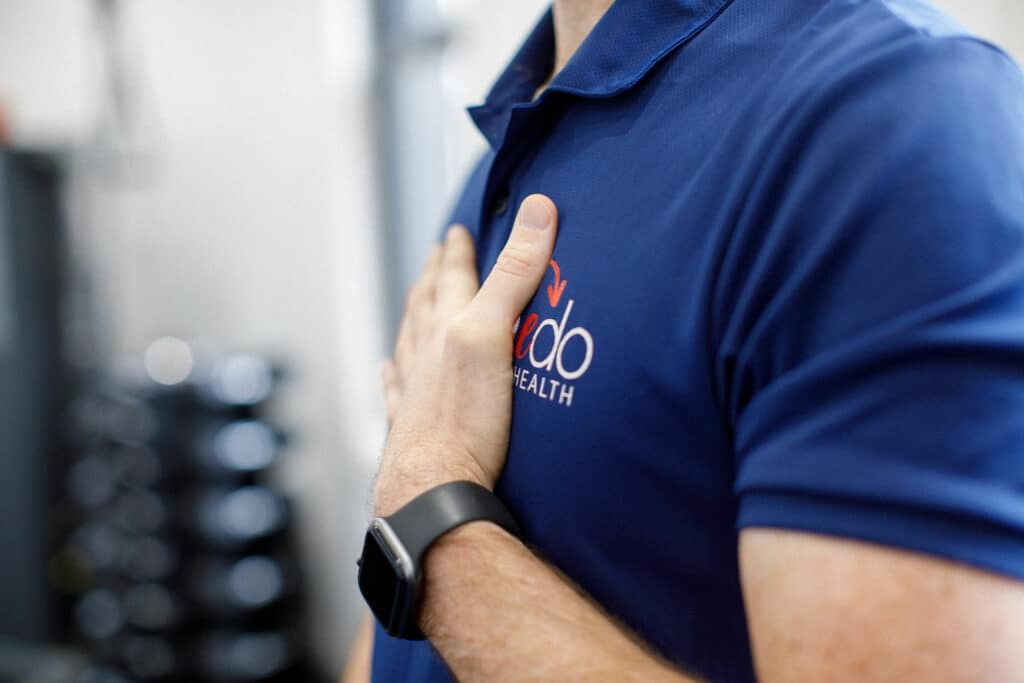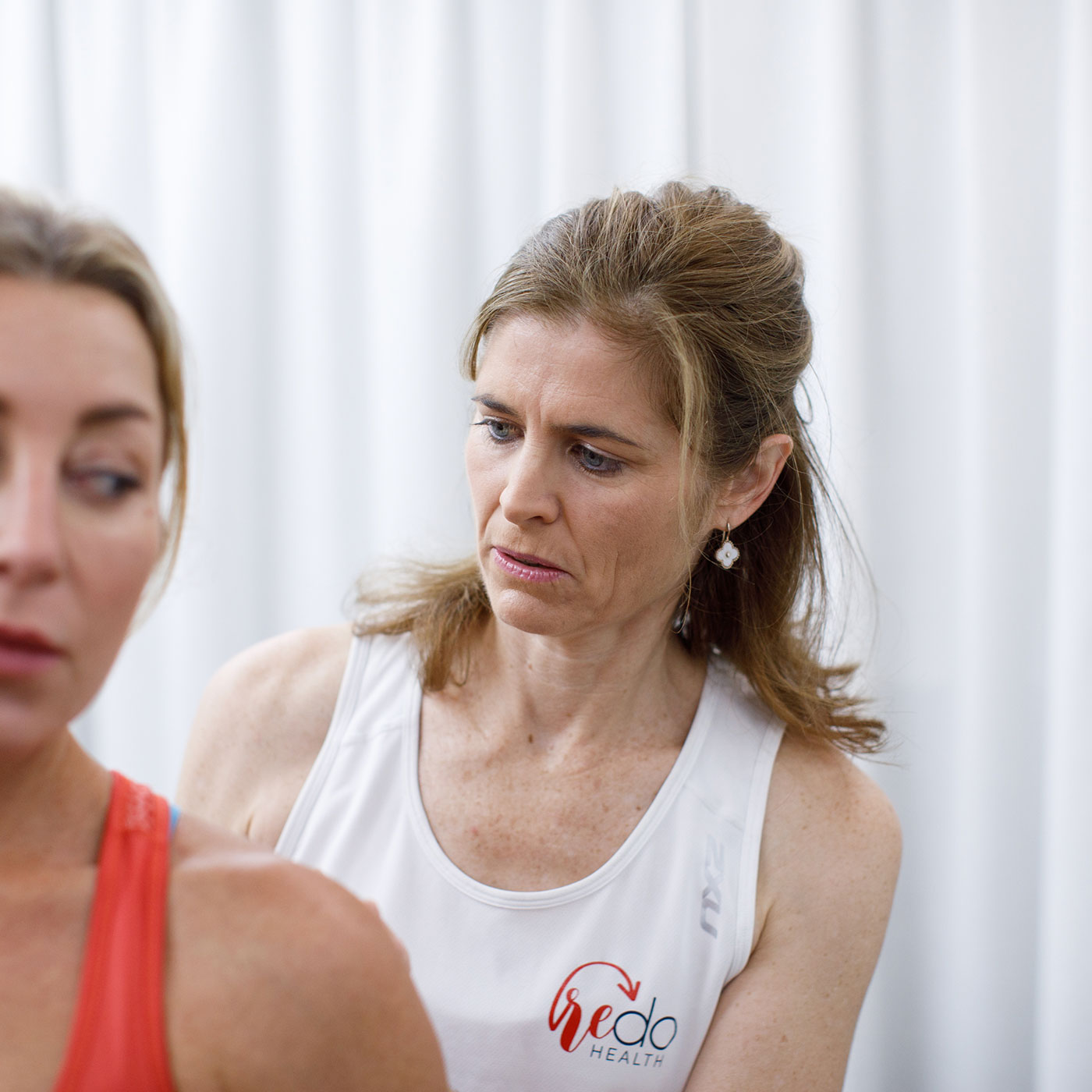
Osteoarthritis and Exercise: How Movement Can Reduce Pain and Improve Mobility
If you live with stiff or painful joints, the idea of exercising might sound uncomfortable — or you might have been told to avoid certain

We breathe over 20,000 times a day, yet most of us don’t think twice about it. But if you struggle with chronic pain, fatigue, stress, or movement issues, your breathing could be playing a bigger role than you realise.
At RedoHealth, one of the first things we assess with clients—whether they’re recovering from injury or managing ongoing pain—is how they breathe.
In this post, I’ll break down the mechanics of breathing, the physiology behind breath, and most importantly—how you can improve it.
Breathing mechanics refer to how your body physically breathes—how the lungs, diaphragm, and rib cage move together to draw air in and out.
The diaphragm is your primary breathing muscle. When you inhale, it contracts and moves downward, creating negative pressure in your chest to pull air into the lungs. When you exhale, the diaphragm relaxes and returns to its resting position.
This movement also:
Supports core stability
Influences posture
Affects pelvic floor function

Many people breathe with their chest and shoulders rather than their diaphragm. This is often caused by:
Chronic stress
Poor posture (especially from sitting)
Previous injury or pain
Anxiety or high-alert states
Over time, this leads to poor breathing habits like shallow, fast breathing, tension in the neck and upper chest, and reduced mobility in the rib cage and spine.

The physiology of breathing involves how your body processes oxygen and carbon dioxide, and how breathing impacts your nervous system.
Most people focus on getting more oxygen. But carbon dioxide (CO₂) is just as important. It plays a key role in delivering oxygen from the bloodstream into your tissues.
When you over-breathe or breathe too fast, you exhale too much CO₂. This can lead to symptoms like:
Dizziness or light-headedness
Fatigue or poor concentration
Anxiety or restlessness
Reduced exercise tolerance
This is why nasal breathing and slower, controlled breathwork can be so powerful.
Your breath is one of the fastest ways to influence your nervous system.
Fast, shallow mouth breathing = activates fight or flight mode (sympathetic nervous system)
Slow, deep nasal breathing = promotes rest and recovery (parasympathetic nervous system)
If you’re always feeling “on edge” or struggle to relax, the way you’re breathing could be a factor.
Here are 3 quick ways to assess your breathing:
Place one hand on your chest and one on your belly.
👉 When you breathe in, which hand rises more?
Your belly should expand first, indicating diaphragm use.
After a normal exhale, hold your breath and time how long until you first feel the need to breathe.
Less than 20 seconds? You may be CO₂ sensitive and over-breathing.
Over 30–40 seconds is typically a healthy range.
Can you comfortably breathe through your nose for 2–3 minutes while sitting or walking? If not, this may indicate a dysfunctional breathing pattern.

At RedoHealth, we integrate breath retraining into physio programs because it affects pain, performance, and recovery.
Lie on your back or stomach with hands on your belly.
Breathe in slowly through the nose, feeling your belly expand.
Exhale gently and fully.
Repeat for 2–5 minutes daily.
Inhale for 4 seconds
Hold for 4 seconds
Exhale for 4 seconds
Hold for 4 seconds
Repeat 4–8 cycles
Coordinate breath with movement (e.g., inhale before a squat, exhale during the lift) to improve core engagement and movement control.
Your breath affects everything—from your posture and core strength to your mental state and energy levels.
If you’re experiencing persistent issues like chronic pain, stress, or poor mobility, improving your breathing can make a major difference. It’s one of the most underused tools in rehab and recovery.
What is diaphragmatic breathing?
A deep breathing technique that engages the diaphragm to promote relaxation, oxygenation, and core control.
Why is nasal breathing better?
It warms, humidifies, and filters air, promotes nitric oxide release (which helps blood flow), and supports better gas exchange.
Can breathing improve posture and pain?
Yes—restoring proper breathing mechanics helps rebalance the rib cage, spine,
If you want to explore how your breathing might be impacting your body or recovery, we’d love to help.![]() Book an assessment at RedoHealth to start your breath retraining journey.
Book an assessment at RedoHealth to start your breath retraining journey.
“Change your breath, change your brain, change your body.”
— Brendan McGovern
Clinic Director, Physiotherapist
RedoHealth


If you live with stiff or painful joints, the idea of exercising might sound uncomfortable — or you might have been told to avoid certain

From Melinda… For people who come to my classes and clients who have been seeing me for a while, may have heard some of the

Meet Susan Susan recently suffered a fall attempting to lift a 2.5kg bag of soil overhead in her garden shed when she felt her leg